If you want to make your Pokémon as powerful as they can be in Pokémon Scarlet and Violet, you’ll have to do more than level them up. You’ll have to optimize their stats by training their EVs.
EVs stands for ‘Effort Values.’ They determine what stats (HP, Attack, Defence, Sp. Attack, Sp. Defence, and Speed) a Pokémon will gain after battling, and in turn, fine-tune it for competitive battling. Four EVs equal one stat.
It’s a system that functions independently from experience and leveling.
A Pokémon can have a maximum of 510 EVs, but no more than 252 EVs can in one stat. When you first catch one (or choose your starter), it won’t have any EVs but will gain them over time.
The problem, though, is the distribution will be all over the place. That’s because defeating different Pokémon will cause different EVs to increase. So, a bit of planning (or re-working—we’ll get to that later) is in order.
How to check EVs in Pokémon Scarlet and Violet
You can check a Pokémon’s EVs in Pokémon Scarlet and Violet by pressing X, moving to a specific Pokémon, pressing ‘Check summary,’ pressing right and moving to the ‘Moves and Stats’ page, and then pressing L.
This will make the hexagon graph show EVs in the foreground rather than stats. In the example below, the EV is the brighter-colored shape in the middle. You can see that EVs for Attack and Speed have been optimized. There are 252 in each of them, and the remaining six are split between HP and Defense.
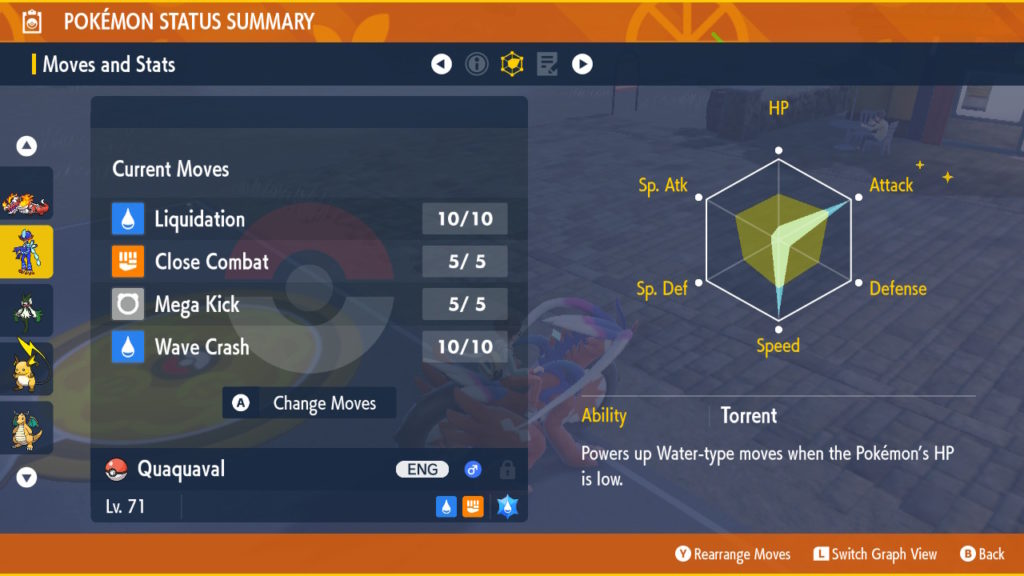
How to train EVs in Pokémon Scarlet and Violet
EVs can be trained in two ways—battling and vitamins. Battling takes longer and requires some knowledge, but it can be facilitated via certain holdable items. Supplements are much quicker, but they’re also rather expensive, and there’s a limit to how much you can do.
Battling
If you want to level up EVs via battling Pokémon, you’ll need to know which ones cause the EV you want to train to grow. This can be done by catching one and seeing what its strongest stat is.
Here’s a list of some of the easiest and most reliable Pokémon to battle for each EV, along with their location:
- HP: Paldean Wooper (South Province Area 5)
- Attack: Yungoos (Inlet Grotto)
- Defense: Tarountula (Poco Path)
- Special Attack: Gastly (East Province Area Two, East Province Area Three, South Province Area One, South Province Area Three, West Province Area One)
- Special Defense: Toedscool (Socarrat Trail)
- Speed: Rookidee (East Province Area One, East Province Area Two, East Province Area Three, South Province Area One, South Province Area Three, South Province Area Five)
Each time you defeat one (in a proper battle, not auto-battling), the EV associated with it will increase by one. That means you’ll need to defeat 252 of them to increase an EV to its maximum, which can take a long time.
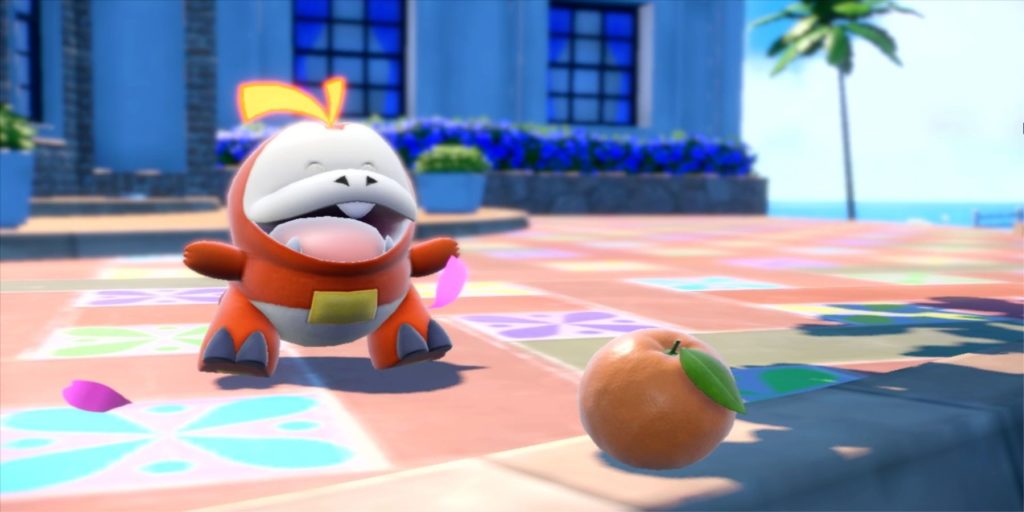
Power items
Fortunately, you can make this process much faster by buying the following holdable items from Delibird Presents in Mesagoza, Levincia, or Cascarrafa.
They cost 10,000 apiece, and increase the EV associated with them by eight per battle, regardless of which Pokémon you battle. The only downside is they halve your Pokémon’s speed while holding them.
- HP: Power Weight
- Attack: Power Bracer
- Defence: Power Belt
- Special Attack: Power Lens
- Special Defence: Power Band
- Speed: Power Anklet
Using this method, you’ll only need to defeat around 32 Pokémon to max out a desired EV. What’s more, you can buy multiple ones and give them to each Pokémon in your party. They’ll gain EVs even without participating in the battle.
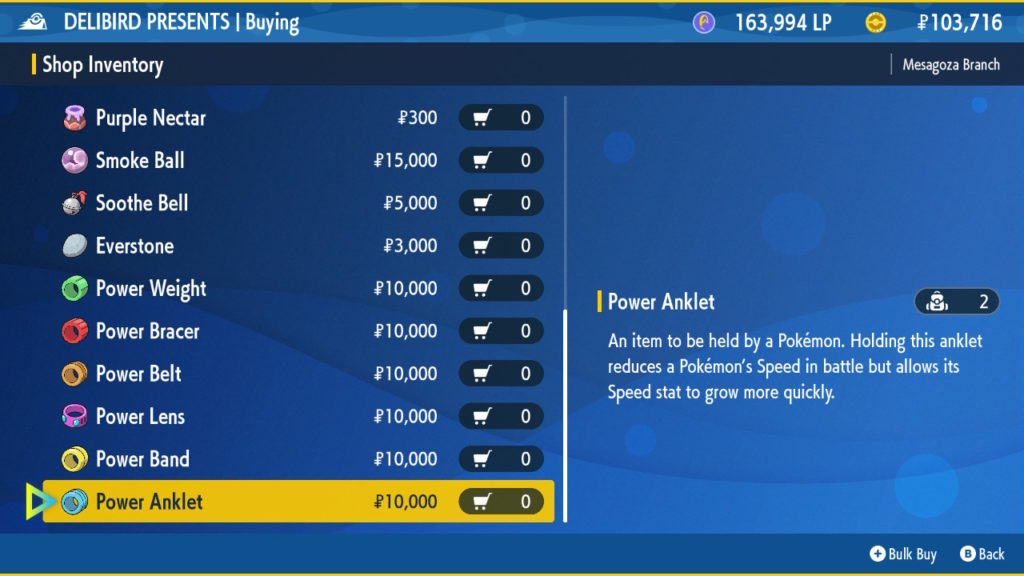
Vitamins
To make the process even faster, you can purchase one of the following vitamins to increase a desired EV by ten. They cost 10,000 each at Chansey Supply stores in big cities.
You can use a specific one up to 25 times on a Pokémon, making it an easy way to bump an EV up to 250—if you have the money to spare.
- HP: HP Up
- Attack: Protein
- Defence: Iron
- Special Attack: Calcium
- Special Defence: Zinc
- Speed: Carbos
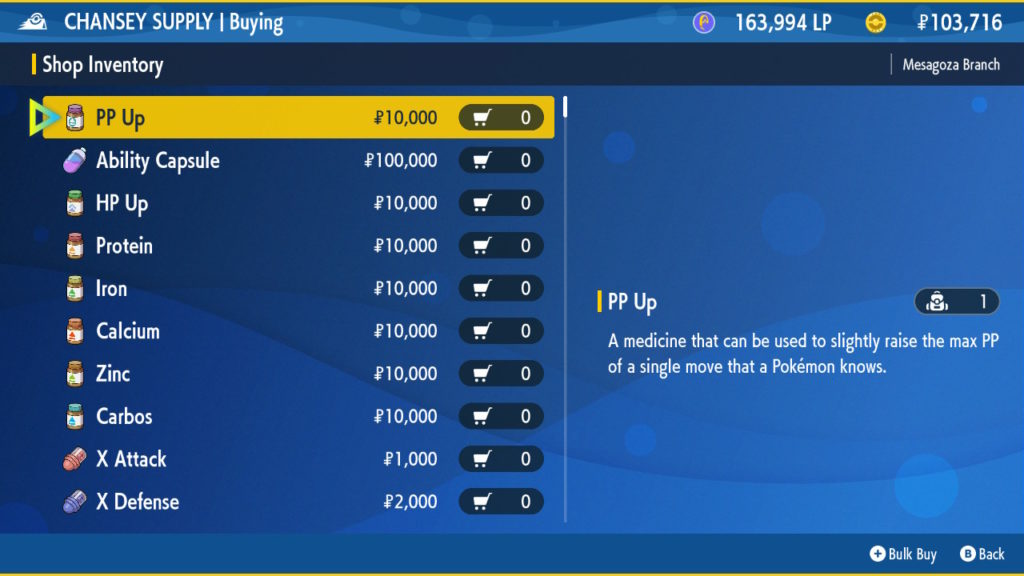
How to reset EVs in Pokémon Scarlet and Violet
If you’re new to EV training, chances are the EV distribution on some of your Pokémon is already a mess. This happens to a lot of people and is practically inevitable for starter Pokémon.
The good news, though, is there’s a way to reset them. It’s time-consuming and expensive, but it can be done thanks to six berries—all of which reduce a certain EV by ten.
- HP: Pomeg Berry
- Attack: Kelpsy Berry
- Defence: Qualot Berry
- Special Attack: Hondew Berry
- Special Defence: Grepa Berry
- Speed: Tomato Berry
They’re pretty hard to come by, though. You’ll find them littered throughout the Paldea wilderness in the form of shining, sparking spots on the ground, particularly in grassy areas and fields.
The best places to look are East Province Area One and East Province Area Two. Alternatively, you can also find them in the grassy areas in Area Zero if you’ve reached the endgame.
You can also obtain them in large quantities via an auction in Port Marinada. The NPC wearing a black tank top towards the center of the market sells them on a randomized basis each day. You’ll have to bid between 10,000 and 20,000 to win them, and after you’ve won them, you’ll need to wait for the day-to-night cycle to pass in-game before you can do it again.

What are the best EVs to train in Pokémon Scarlet and Violet?
Okay, so now you know just about everything there is to EV training, you’re probably wondering—what are the best ones to train? The answer is—you guessed it, an open-ended one.
A good rule of thumb is to increase the EVs associated with your Pokémon’s strongest stat, and what its moves are. You can tell what category a move is in the Moves and Stats section of a Pokémon’s summary.
To check, click on ‘Forget A Move’ and hover over each one.
The oval-shaped target icon means it’s a Special Attack move, the starry-looking explosion icon means it’s a regular Attack move, and the yin-yang-looking icon means it’s a status move.
Skeledirge, for example, has a lot of Special Attack moves at higher levels. It’s also not very fast by default but has a good amount of HP. So, focusing on Special Attack and HP seems to be a good approach.
In the end, though—it all comes down to preference and strategy. You might opt to have a Pokémon with a high health pool whose sole purpose is to hop in, absorb damage, and inflict status conditions.
Experiment a bit and see what works best for you!


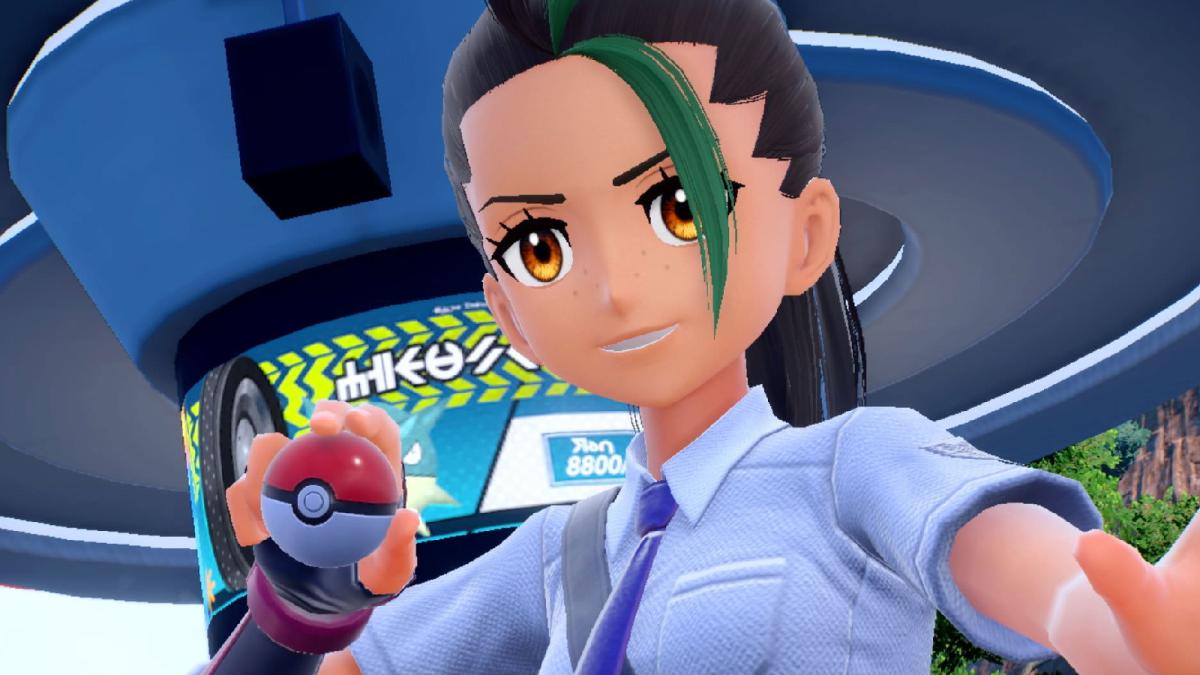

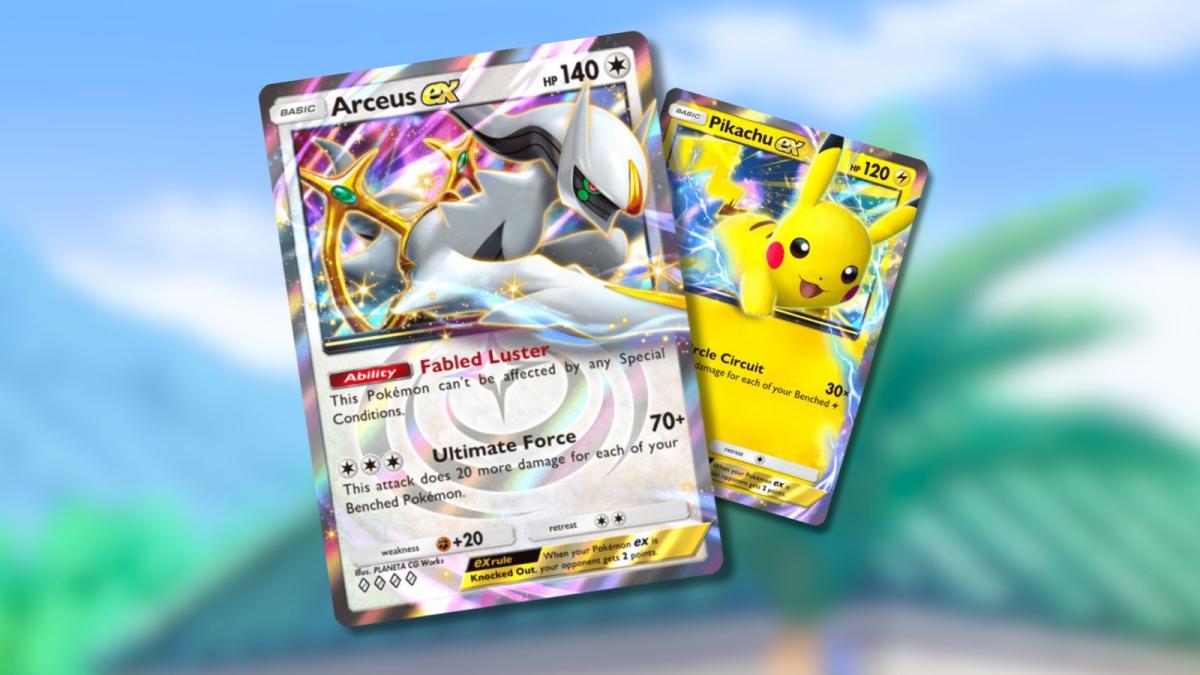
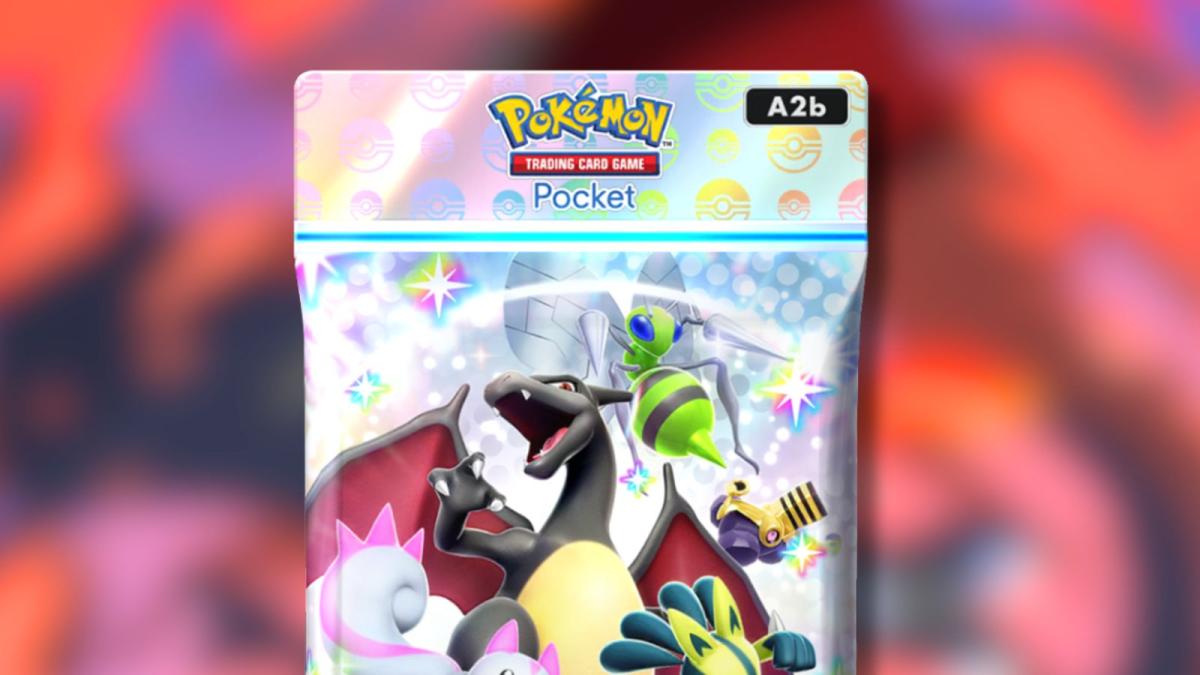
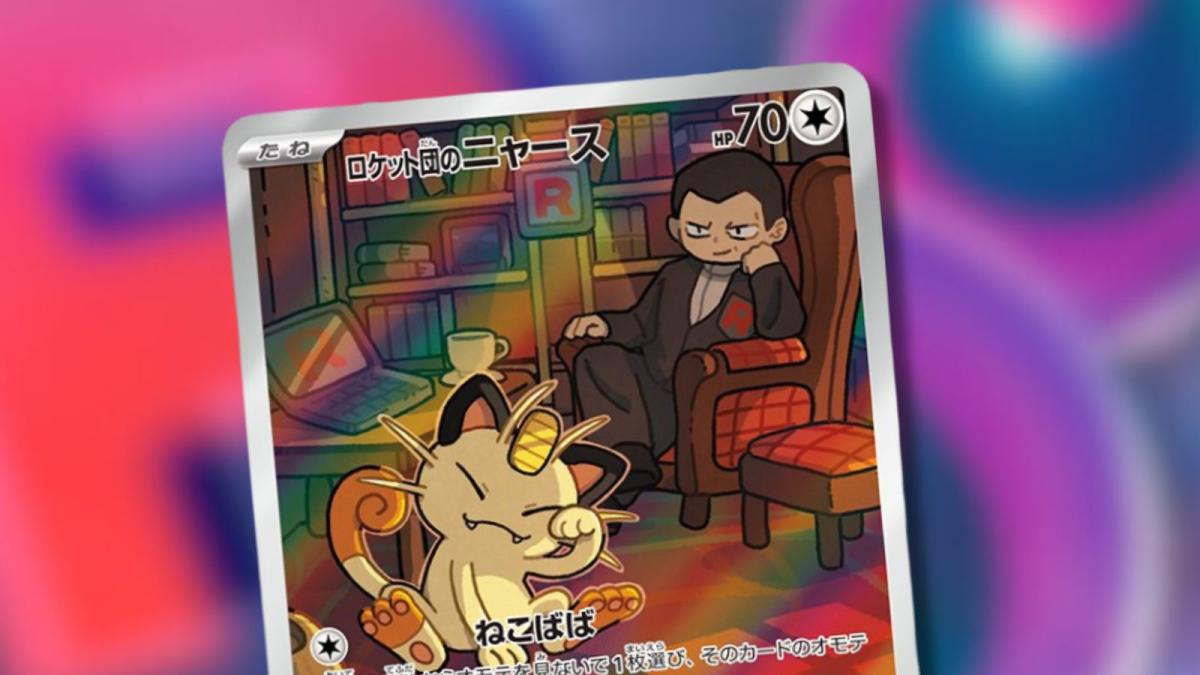
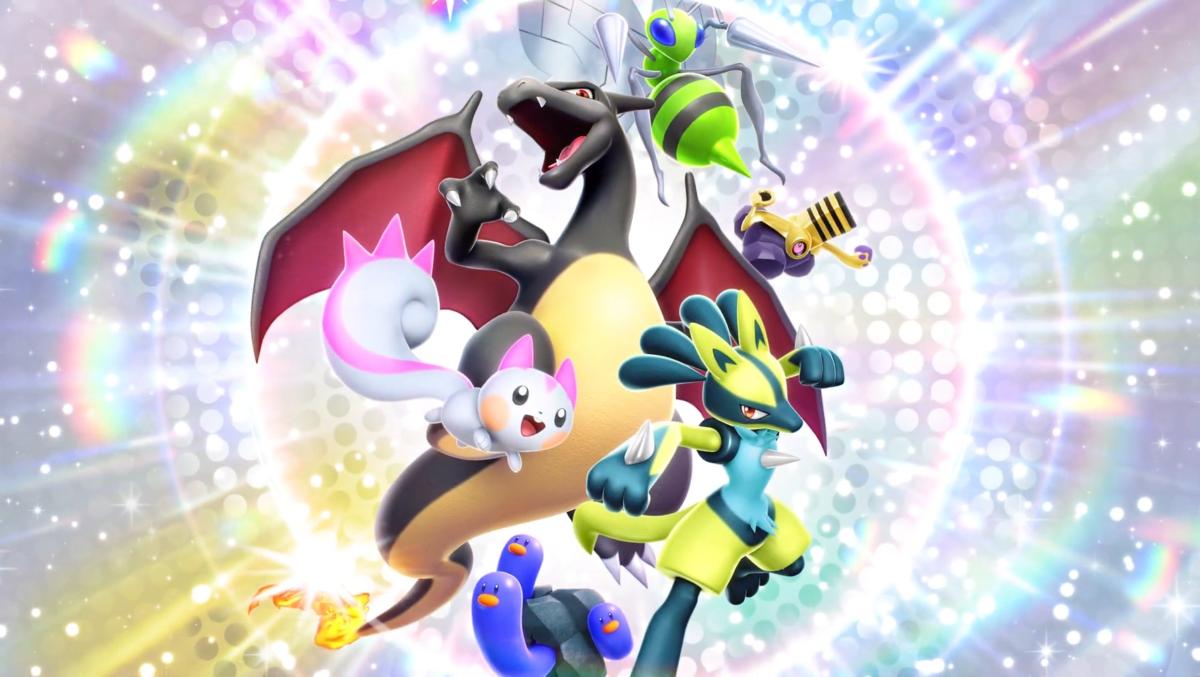




Published: Nov 27, 2022 09:14 pm